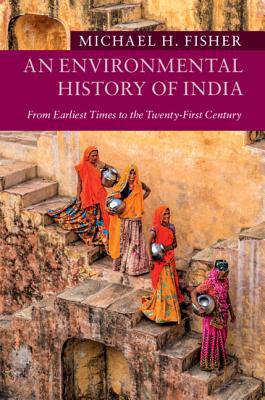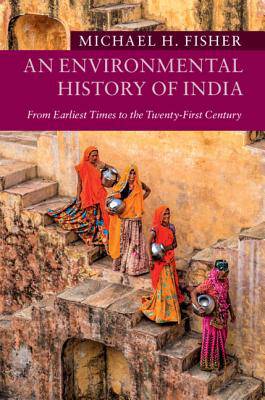
Bedankt voor het vertrouwen het afgelopen jaar! Om jou te bedanken bieden we GRATIS verzending (in België) aan op alles gedurende de hele maand januari.
- Afhalen na 1 uur in een winkel met voorraad
- In januari gratis thuislevering in België
- Ruim aanbod met 7 miljoen producten
Bedankt voor het vertrouwen het afgelopen jaar! Om jou te bedanken bieden we GRATIS verzending (in België) aan op alles gedurende de hele maand januari.
- Afhalen na 1 uur in een winkel met voorraad
- In januari gratis thuislevering in België
- Ruim aanbod met 7 miljoen producten
Zoeken
€ 178,95
+ 357 punten
Uitvoering
Omschrijving
India, Pakistan, and Bangladesh contain one-fifth of humanity, are home to many biodiversity hotspots, and are among the nations most subject to climatic stresses. By surveying their environmental history, we can gain major insights into the causes and implications of the Indian subcontinent's current conditions. This accessible new survey begins roughly 100 million years ago, when continental drift moved India from the South Pole and across the Indian Ocean, forming the Himalayan Mountains and creating monsoons. Coverage continues to the twenty-first century, taking readers beyond independence from colonial rule. The new nations of India, Pakistan, and Bangladesh have produced rising populations and have stretched natural resources, even as they have become increasingly engaged with climate change. To understand the region's current and future pressing issues, Michael H. Fisher argues that we must engage with the long and complex history of interactions among its people, land, climate, flora, and fauna.
Specificaties
Betrokkenen
- Auteur(s):
- Uitgeverij:
Inhoud
- Aantal bladzijden:
- 312
- Taal:
- Engels
- Reeks:
Eigenschappen
- Productcode (EAN):
- 9781107111622
- Verschijningsdatum:
- 18/10/2018
- Uitvoering:
- Hardcover
- Formaat:
- Genaaid
- Afmetingen:
- 152 mm x 226 mm
- Gewicht:
- 362 g

Alleen bij Standaard Boekhandel
+ 357 punten op je klantenkaart van Standaard Boekhandel
Beoordelingen
We publiceren alleen reviews die voldoen aan de voorwaarden voor reviews. Bekijk onze voorwaarden voor reviews.









